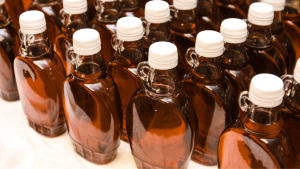After a long Wisconsin winter, there’s nothing better than a day when the temperature rises above freezing and the sun peeks out from behind the clouds. For the 5,000 maple syrup producers in Wisconsin, it’s even more exhilarating!
Around mid-February, sugar workers can begin the process of producing maple syrup.
In fact, it is the first crop harvested in the Wisconsin agricultural season. This sweet delicacy is not only delicious, but also full of natural nutrients.
Maple syrup everything starts with maple.
Four types of trees are used in this process: sugar maple, black maple, red maple and silver maple. Once the maple reaches 10-14 inches in diameter, it can be used to make maple syrup.
A compact spout, called a tap, is placed into the tree using a compact hammer. When you insert the tap, a sweet, watery substance called juice will start dripping from the tap. The juice consists of 2% sugar and 98% water. This sap has to collect somewhere, so maple syrup producers place a bag or bucket under the tap to collect it. Producers will visit the trees daily to collect the sap and store it in a vast tank or container.
Some manufacturers operate a system called a sap collection tube. Plastic tubes are connected from tree to tree, and sap flows the entire length of the tubes to a collecting area. This creates less need to visit each tree every day.
More sap flows through the maple tree when the freeze-thaw cycle occurs.
This means that at night the temperature drops below 32 degrees and during the day it rises above 32 degrees. Under these conditions, the average tree will produce 10 gallons of sap each season.
Once the sap is collected, the process of turning it into maple syrup begins.
It takes about 40 gallons of sap to produce one gallon of syrup.
The sap is boiled to remove the water, leaving behind the caramelized sugar we call maple syrup. This process can be carried out in various ways. Some producers cook the juice in a vast pan over an open fire, others operate a steamer. After cooking and cooling, the syrup is filtered to remove unwanted particles.
From there, the maple syrup is bottled in smaller glass and plastic containers for consumers to enjoy. Some syrups are even made into delicious maple products such as candy, cream, tea and coated nuts.

Maple syrup production is a timeless tradition in Wisconsin and is often a bonding experience for families. I have fond memories of collecting sap in the forest, testing the taste of sizzling syrup, and even roasting marshmallows on an open fire. Manufacturers go through a very exact process that ultimately provides the perfect topping or sweetener for your next meal.


